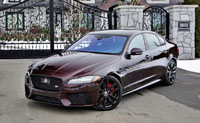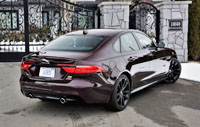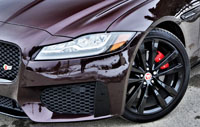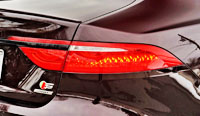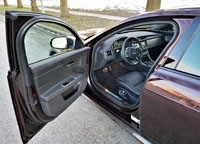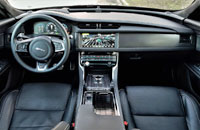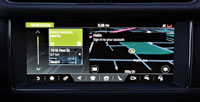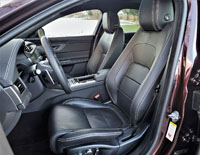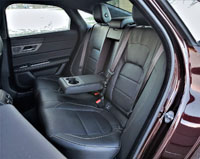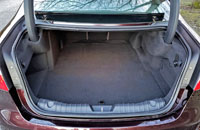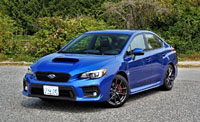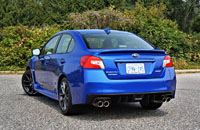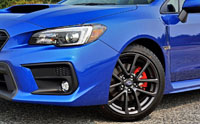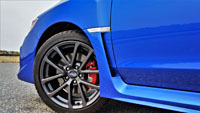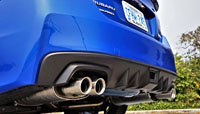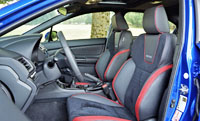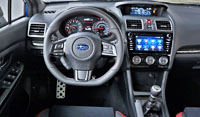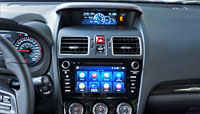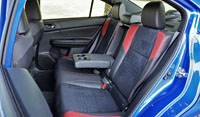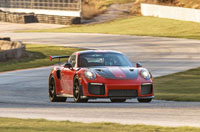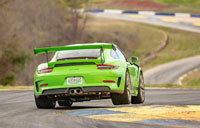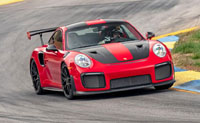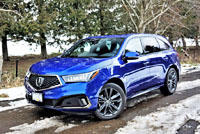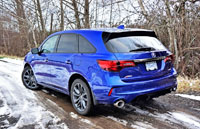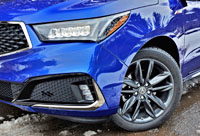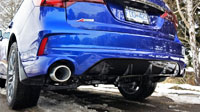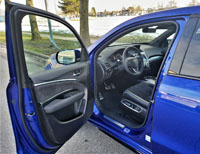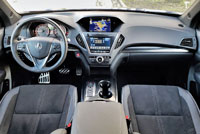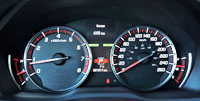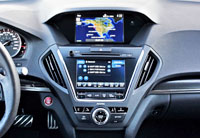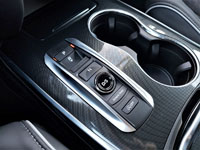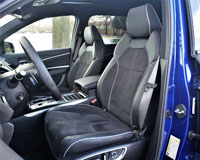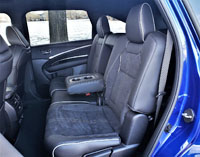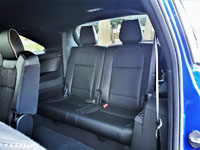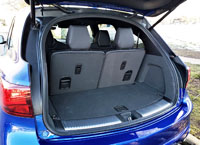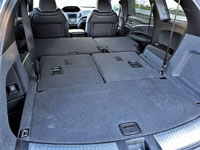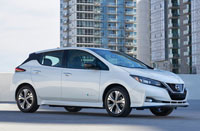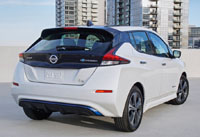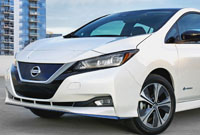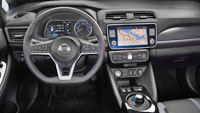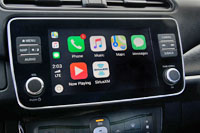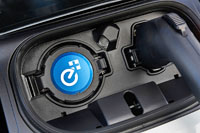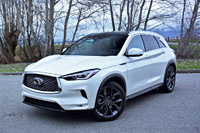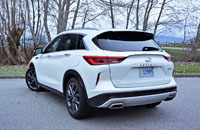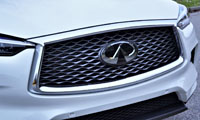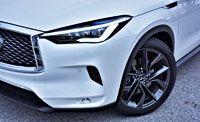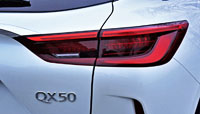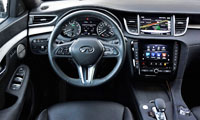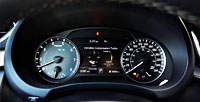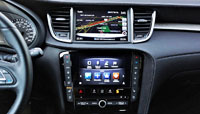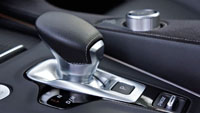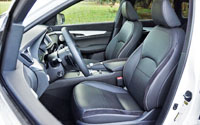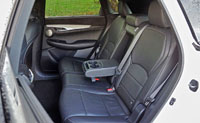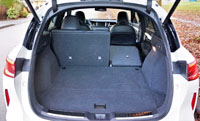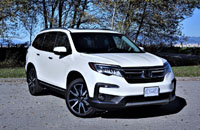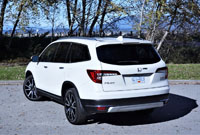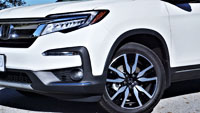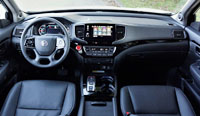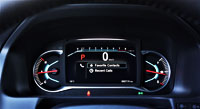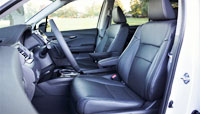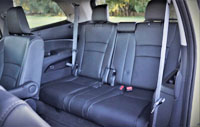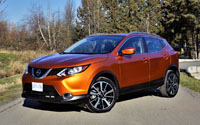
Despite looking identical to both 2017 and 2018 Qashqai models, especially in its official launch colour of Monarch Orange, this 2019 version gets a lot of impressive new goodies under the sheetmetal.
For starters, all Qashqai trims now include Intelligent Emergency Braking (IEB), Blind Spot Warning (BSW), Rear Cross Traffic Alert (RCTA), and Nissan’s smart Rear Door Alert (RDA) system, which reminds if you’ve left something or someone in the back seat, while the subcompact SUV’s instrument panel now boasts a fresh, new standard NissanConnect centre touchscreen that’s 2.0 inches larger at 7.0 inches in diameter, and features standard Apple CarPlay and Android Auto smartphone integration, satellite radio, live navigation, plus mobile apps and services, while the same base Qashqai also includes a second USB port within the centre console, as well as Nissan’s ultra-useful Divide-N-Hide cargo system in the storage area.
That’s a lot of new gear for a little crossover that’s otherwise unchanged. Nissan even managed to keep the base price as close as possible to last year’s unbelievably low $19,998 window sticker, the new model available for just $200 more at $20,198, which still makes it the second-most affordable SUV in Canada behind Nissan’s own $18,298 Kicks.
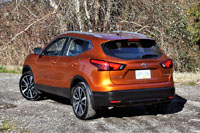
And it’s not like the base Qashqai is devoid of standard features either, with a list that includes items like projector headlamps with integrated LED daytime running lights, heated power-adjustable side mirrors with integrated LED turn signals, power windows and door locks with a switchblade-style remote, an electromechanical parking brake (which oddly reverts to a foot-operated one on S CVT and SV CVT trims), a tilt and telescopic steering wheel, a colour TFT multi-information display, variable intermittent wipers, sun visors with extensions and vanity mirrors, overhead sunglasses storage, micro-filtered air conditioning, a rearview camera that’s now easier to use thanks to the larger centre display, Bluetooth phone connectivity with audio streaming, text message read and response capability, Siri Eyes Free, four-speaker AM/FM/CD/MP3/WMA audio with illuminated steering wheel controls, speed-sensitive volume, Radio Data System (RDS), Quick Comfort heatable front seats (that really do heat up fast), a rear-seat centre armrest, a cargo cover, six cargo area tie-down hooks, tire pressure monitoring with Easy Fill Tire Alert, all the expected passive and active safety and security features, plus much more.
The 2019 Qashqai once again comes in three trims, including the aforementioned base S model, plus the SV and SL, the former two offering optional all-wheel drive and the latter making it standard. That top-line trim is how my tester came, complete with an even fancier Platinum package as well, but before I delve deeper into all of that, take heed the $26,198 SV is a great choice for those not wanting the pay the price for premium-level pampering brought on by the SL.
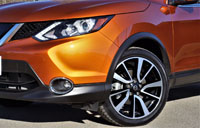
The SV features an attractive set of 17-inch alloys, which replace the base model’s 16-inch steel wheels with covers, plus auto on/off headlights, fog lamps, remote engine start, proximity-sensing keyless access, pushbutton ignition, high beam assist, rear parking sensors, illumination added to the vanity mirrors, a powered moonroof, a heatable leather-wrapped steering wheel rim, a leather-wrapped shift knob, cruise control, two more stereo speakers, dual-zone automatic climate control, rear passenger air vents, etcetera, while a bevy of new advanced driver assistance systems get added as well, such as enhanced autonomous Intelligent Emergency Braking with Pedestrian Detection, Lane Departure Warning (LDW) with Intelligent Lane Intervention, and Rear Intelligent Braking (R-IEB).
My tester’s top-line SL trim starts at $31,398, but it really comes across like a mini luxury ute thanks to standard 19-inch alloy wheels, roof rails, the electromechanical parking brake again (the only trim that mates it to the CVT), a 360-degree Intelligent Around View Monitor, navigation with detailed mapping, voice recognition, SiriusXM Traffic and Travel Link, leather upholstery, an eight-way power driver’s seat with two-way powered lumbar, and a front driver’s seatback pocket, while Intelligent Cruise Control (ICC), Moving Object Detection (MOD) to enhance the R-IEB, and ProPilot Assist semi-automated self-driving capability, which can help maintain your lane and ease driving stress while on the highway, are new to the SL’s standard features list.
Lastly, as noted earlier my tester included the $2,000 SL Platinum Package that adds LED headlights for much brighter night vision, an auto-dimming interior mirror with an integrated Homelink garage door opener, a great sounding nine-speaker Bose audio system, and NissanConnect Services, which is filled with advanced mobile apps to make life with your Qashqai easier and more productive.
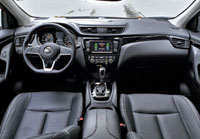
Incidentally, all pricing for the 2019 Qashqai, including trims, packages and individual options, was sourced right here at CarCostCanada, where you can also find money saving rebate info and dealer invoice pricing that could save you thousands.
Along with an impressive load of features no matter the trim, the Qashqai provides a surprisingly refined cabin. I drove a base model last year, and it was very good for its $20k price point, but my current tester’s SL Platinum trim feels even more upscale. Features like a soft-touch dash and padded composite front door uppers are common across the Qashqai line, but as noted the lovely contrast-stitched perforated leather upholstery is unique to the SL, as is the lower console that also gets leatherette-wrapped padding with contrast stitching to each side. This protects your inside knee from chafing against what would otherwise be hard plastic, and it looks really attractive as well.
Some other notable SL details include piano black lacquer surfacing across the instrument panel, the centre stack, around the shift lever, and highlighting the door panels, this topped off with a tastefully thin strip of satin silver accenting. Nissan adds more satin silver on the steering wheel and around the shifter, and then throws splashes of chrome brightwork around the rest of the cabin to highlight key areas. Needless to say, it’s an attractive environment.
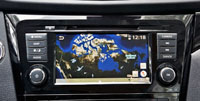
Back to that front centre console, the transmission connected to the leather-clad lever is Nissan’s Xtronic CVT (continuously variable transmission), which joins up to a strong 2.0-litre four-cylinder engine capable of 141 horsepower and 147 lb-ft of torque. The CVT will likely be preferable to the majority of Qashqai buyers, but you may very well enjoy the six-speed manual that comes standard in base S trim. I tested it last year and came away smiling, as it’s a nicely sorted manual gearbox that adds a lot of performance back into this utility’s character, which as tested here is more about smooth, quiet, comfort.
Continuously variable transmissions get a fair bit of flack from auto scribes and enthusiasts alike, but after testing three Qashqais with this autobox and plenty of other Nissan models with a variation of the same type of CVT, I find it perfectly suitable to SUV life. Of course, it doesn’t provide the same level of performance as the manual, actually getting a bit buzzy when digging deep into the throttle due to a CVT’s inherent nature to hold onto revs longer than a conventional automatic, but Nissan includes a manual mode via the shift lever that lets you force the transmission from its high-rev zone to more audibly agreeable lower revs, a process that will eventually happen on its own, but why wait. At normal everyday speeds I found the transmission was best left to its own devices, where it’s actually quite smooth and fully capable.
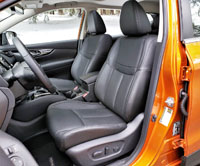
On that note, the Qashqai gets up and goes quickly enough without needing to push the engine too hard, plus it rides well for this class thanks to a version of the same fully independent suspension as the Rogue, incorporating front struts and a rear multi-link setup with stabilizer bars at both ends. It nicely balances the firmness needed for its commendable handling with ample comfort, but don’t expect it to deliver ride quality to the levels of a Rogue or Murano, as the little SUV is just not substantive enough. Its standard four-wheel disc brake setup stops quickly, however, helped along by Intelligent Engine Braking that comes standard SV and SL models.
It delivers better fuel economy than a larger SUV could too, with a claimed Transport Canada rating of 10.0 L/100km city, 8.1 highway and 9.2 combined with the FWD manual, 8.6 city, 7.2 highway and 8.0 combined with FWD and the CVT, or 9.1, 7.6 and 8.4 with the CVT and AWD.
Its fuel efficiency may differ slightly when loaded up, and believe me you can get a lot of gear in a Qashqai. Behind its standard 60/40-split rear seatbacks are 648 litres (22.9 cubic feet) of available cargo space, which puts it right near the top of its class, while the 1,730 litres (61.1 cubic feet) available when folding those seats flat is even harder to beat.
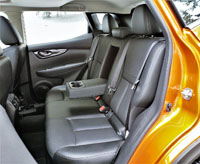
As for passenger room and comfort, the leather seats offer nice sculpting up front that cups the backside ideally, and the driver’s seating position was perfect for my five-foot-eight smallish frame, allowing ample adjustability matched by a tilt and telescopic steering column that was able to be pulled far enough rearward to accommodate my longer legs and shorter torso. If I can find a negative it’s the two-way “HI” and “LO” seat heater settings, because more temperature variables would inevitably be able to provide greater comfort, but it’s tough to be overly critical in this class, especially when everything else about the Qashqai is spot on.
You won’t be finding derriere warmers in back, but the rear outboard positions are comfortable enough and usable for larger sized teens and adults. As usual I set the driver’s seat for my height and still had about five inches ahead of my knees when sitting behind, plus another four over my head, which should make it ok for someone over six feet. Side-to-side room is plentiful too, optimal for two but capable of three, while my outside shoulder and hips benefited from about three to four inches of free space. As for fancy stuff, nice padded and stitched leatherette armrests on each door join a folding centre armrest with dual cupholders, while dual vents on the backside of the front centre console keep rear passengers aerated.
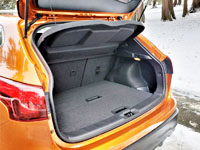
Roomy for small families, empty nesters or just active lifestyle folks and all their stuff, plus well made, filled with features and fun to drive, the Qashqai delivers much more than its paltry price suggests, while it keeps giving long after its initial purchase thanks to superb fuel economy and good expected reliability. It’s no wonder Qashqai sales have been so strong in Canada and around the world. The Qashqai truly is a smart choice in the subcompact SUV class.
Story credit: Trevor Hofmann
Photo credit: Trevor Hofmann

